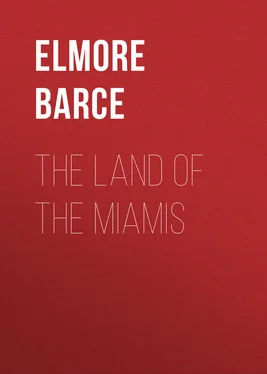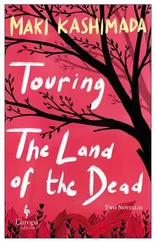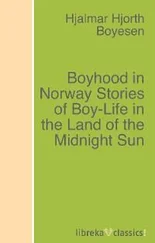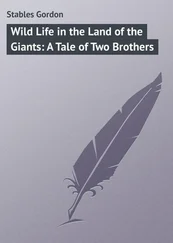Elmore Barce - The Land of the Miamis
Здесь есть возможность читать онлайн «Elmore Barce - The Land of the Miamis» — ознакомительный отрывок электронной книги совершенно бесплатно, а после прочтения отрывка купить полную версию. В некоторых случаях можно слушать аудио, скачать через торрент в формате fb2 и присутствует краткое содержание. ISBN: , Жанр: foreign_antique, foreign_prose, Историческая проза, на английском языке. Описание произведения, (предисловие) а так же отзывы посетителей доступны на портале библиотеки ЛибКат.
- Название:The Land of the Miamis
- Автор:
- Жанр:
- Год:неизвестен
- ISBN:http://www.gutenberg.org/ebooks/30244
- Рейтинг книги:4 / 5. Голосов: 1
-
Избранное:Добавить в избранное
- Отзывы:
-
Ваша оценка:
- 80
- 1
- 2
- 3
- 4
- 5
The Land of the Miamis: краткое содержание, описание и аннотация
Предлагаем к чтению аннотацию, описание, краткое содержание или предисловие (зависит от того, что написал сам автор книги «The Land of the Miamis»). Если вы не нашли необходимую информацию о книге — напишите в комментариях, мы постараемся отыскать её.
The Land of the Miamis — читать онлайн ознакомительный отрывок
Ниже представлен текст книги, разбитый по страницам. Система сохранения места последней прочитанной страницы, позволяет с удобством читать онлайн бесплатно книгу «The Land of the Miamis», без необходимости каждый раз заново искать на чём Вы остановились. Поставьте закладку, и сможете в любой момент перейти на страницу, на которой закончили чтение.
Интервал:
Закладка:
All that portion of Indiana lying north and west of the Wabash, is essentially a part of the Grand Prairie. "Of the twenty-seven counties in Indiana, lying wholly or partially west and north of the Wabash, twelve are prairie, seven are mixed prairies, barrens and timber, the barrens and prairie predominating. In five, the barrens, with the prairies, are nearly equal to the timber, while only three of the counties can be characterized as heavily timbered. And wherever timber does occur in these twenty-seven counties, it is found in localities favorable to its protection against the ravages of fire, by the proximity of intervening lakes, marshes or watercourses." On the Indiana side, the most pronounced of the tracts of prairie occur in western Warren, Benton, southern and central Newton, southern Jasper, and western White and Tippecanoe. Benton was originally covered with a great pampas of blue-stem, high as a horse's head, interspersed here and there with swamps of willows and bull grass, while only narrow fringes of timber along the creeks, and some five or six groves of timber and woodland, widely scattered, served as land marks to the early traveler.
Those who early observed and explored the grassy savannas of Indiana and Illinois, always maintained that they were kept denuded of trees and forests by the action of the great prairie fires. Among those who have supported this theory are the Hon. James Hall, author of "The West," published in Cincinnati in 1848; the Hon. John Reynolds, former governor of the state of Illinois, and the Hon. John D. Caton, a late judge of the Supreme Court of Illinois. Caton's observations on this subject are so interesting and ingenious that we cannot refrain from making the following quotation:
"The cause of the absence of trees on the upland prairies is the problem most important to the agricultural interests of our state, and it is the inquiry which alone I propose to consider, but cannot resist the remark that wherever we do find timber throughout the broad field of prairie, it is always in or near the humid portions of it, as along the margins of streams, or upon or near the springy uplands. Many most luxurious growths are found in the highest portions of the uplands, but always in the neighborhood of water. For a remarkable example, I may refer to the great chain of groves extending from and including the Au Sable grove on the east and Holderman's grove on the west, in Kendall county, occupying the high divide between the waters of the Illinois and the Fox rivers. In and around all the groves flowing springs abound, and some of them are separated by marshes, to the borders of which the great trees approach, as if the forests were ready to seize upon each yard of ground as soon as it is elevated above the swamps. Indeed, all our groves seem to be located where the water is so disposed as to protect them, to a greater or less extent, from the prairie fire, although not so situated as to irrigate them. If the head waters of the streams on the prairies are most frequently without timber, as soon as they have attained sufficient volume to impede the progress of fires, with very few exceptions, we find forests on their borders, becoming broader and more vigorous as the magnitude of the streams increase. It is manifest that the lands located on the borders of streams which the fire cannot pass, are only exposed to one-half the fires to which they would be exposed, but for such protection. This tends to show, at least, that if but one-half the fires that have occurred had been kindled, the arboraceous growth could have withstood their destructive influences, and the whole surface of what is now prairie would be forest. Another confirmatory fact, patent to all observers, is, that the prevailing winds upon the prairies, especially in the autumn, are from the west, and these give direction to the fires. Consequently, the lands on the westerly sides of the streams are the most exposed to the fires, and, as might be expected, we find much the most timber on the easterly sides of the streams."
Local observation in Benton County, Indiana, which is purely prairie throughout, would seem to confirm the judge's view. Parish grove, on the old Chicago road, was filled with springs, and a rather large spring on the west side of the grove, supplied water for the horses of the emigrants and travelers who took this route to the northwest in the early 40's. Besides this, the grove was situated on rather high uplands, where the growth of grass would be much shorter than on the adjoining plain. It is probable that this spring on the west side, and the springy nature of the highlands back of it, kept the ground moist and the vegetation green, and these facts, coupled with the fact that the grass as it approached the uplands, would grow shorter, probably retarded and checked the prairie fires from the southwest, and gave rise to the wonderfully diversified and luxuriant growth of trees that was the wonder of the early settler. Sugar grove, seven miles to the northwest of Parish grove, and a stopping place on the old Chicago road, lay mostly within the point or headland caused by the juncture of Sugar Creek from the northeast, and Mud Creek from the southeast. Scarcely a tree is on the southwestern bank of Mud creek, but where it widens on the south side of the grove, it protected the growth of the forest on the northern side. Turkey Foot grove, east and south of Earl Park, formerly had a lake and depression both on the south and west sides of it. Hickory Grove, just west of Fowler, in the early days, had a lake or pond on the south and west. The timber that skirted the banks of Pine creek, was heaviest on the eastern side. The headwaters of Sugar, Pine and Mud creeks, being small and narrow, were entirely devoid of trees on their banks, but as they flowed on and acquired strength and volume, a skirt of forest appeared.
The Grand Prairie, the home of the ancient Illinois tribe, the Sacs and Foxes, the Kickapoos, and the prairie Potawatomi, was also the home of the buffalo, or wild cow of America. No story either of the northwest or its Indian tribes would be complete without mention of the bison. Think of the sight that Brigadier General Harmar saw on the early prairies of Illinois, when marching from Vincennes to Kaskaskia, in November 1787! With him the Miami chief, Pachan (Pecan) and a comrade, killing wild game for the soldiers; before him stretching the vastness of the prairie, "like the ocean, as far as the eye can see, the view terminated by the horizon;" here and there the herds of deer and buffalo far in the distance.
For centuries before the advent of the white man the buffalo herds roamed the plain. The savage, with no weapon in his hands, save rudely chipped pieces of stone, was unable to reduce their numbers. With the coming of firearms and the rifle the buffalo passed rapidly away.
In the seventeenth and the early part of the eighteenth centuries the buffalo ranged as far east as western New York and Pennsylvania, and as far south as Virginia, the Carolinas and Georgia. Father Marquette, in his explorations, declared that the prairies along the Illinois river were "covered with buffalos." Father Hennepin, in writing of northern Illinois, between Chicago and the Illinois river, asserted that "There must be an innumerable quantity of wild bulls in this country, since the earth is covered with their horns. * * * They follow one another, so that you may see a drove of them for about a league together. Their ways are beaten, as are our great roads, and no herb grows therein."
Of the presence of large numbers of buffalo, that resorted to the salty licks of Kentucky, we have frequent mention by both Humphrey Marshall and Mann Butler, the early historians of that state. In the year 1755, Colonel James Smith mentions the killing of several buffalo by the Indians at a lick in Ohio, somewhere between the Muskingum, the Ohio and the Scioto. At this lick the Indians made about a half bushel of salt in their brass kettles. He asserts that about this lick there were clear, open woods, and that there were great roads leading to the same, made by the buffalo, that appeared like wagon roads. The wild cattle had evidently been attracted thither by the mineral salts in the water. In the early morning of June 13, 1765, George Croghan, an Indian agent sent out by William Johnson, of New York, to report to the English government conditions in the west, coming into view of one of the fine large meadows bordering on the western banks of the Wabash, saw in the distance herds of buffalo eating the grass, and describes the land as filled with buffalo, deer and bears in "great plenty." On the 18th and 19th of the same month, he traveled through what he terms as a "prodigious large meadow, called the Pyankeshaw's Hunting Ground," and describes it as well watered and full of buffalo, deer, bears, and all kinds of wild game. He was still in the lower Wabash region. On the 20th and 21st of June he was traveling north along the Wabash in the vicinity of the Vermilion river in Vermilion county, and states that game existed plentifully, and that one could kill in a half hour as much as was needed. He spoke, evidently, of the large variety of game before mentioned. The whole of the prairie of Illinois, filled with an abundant growth of the richest grasses, and all the savannas north of the Wabash in Indiana, that really constituted an extension of the Grand Prairie, were particularly suited to the range of the wild herds, and were the last grounds deserted by them previous to their withdrawal west, and across the Mississippi.
Читать дальшеИнтервал:
Закладка:
Похожие книги на «The Land of the Miamis»
Представляем Вашему вниманию похожие книги на «The Land of the Miamis» списком для выбора. Мы отобрали схожую по названию и смыслу литературу в надежде предоставить читателям больше вариантов отыскать новые, интересные, ещё непрочитанные произведения.
Обсуждение, отзывы о книге «The Land of the Miamis» и просто собственные мнения читателей. Оставьте ваши комментарии, напишите, что Вы думаете о произведении, его смысле или главных героях. Укажите что конкретно понравилось, а что нет, и почему Вы так считаете.












